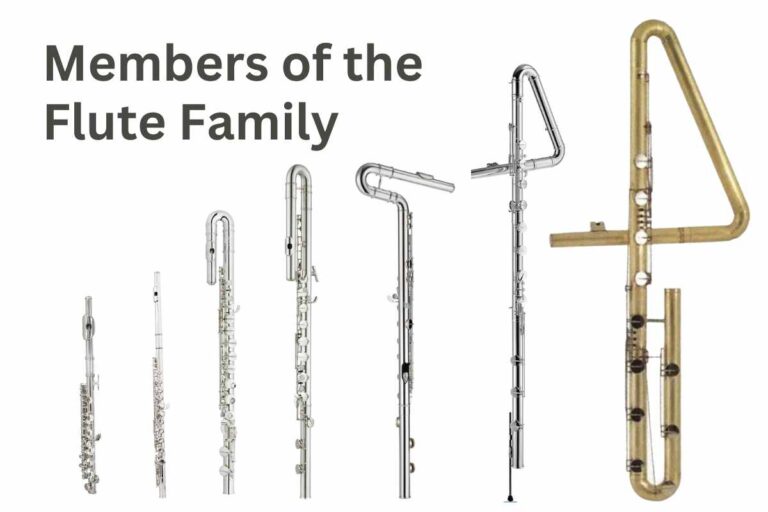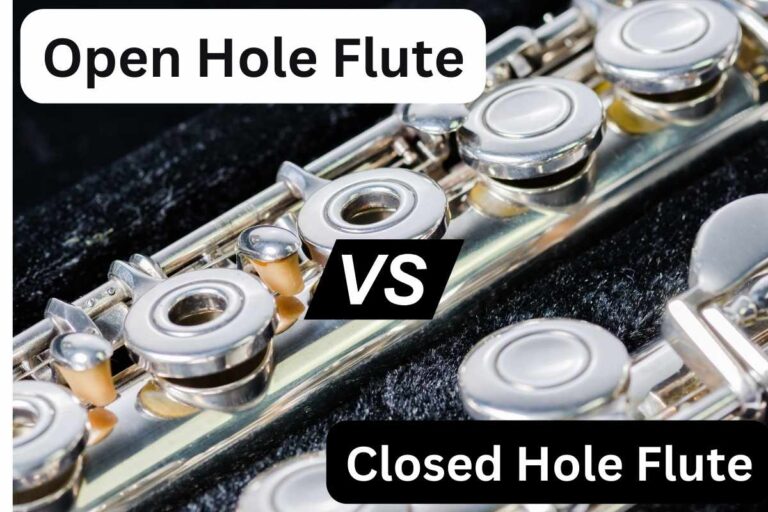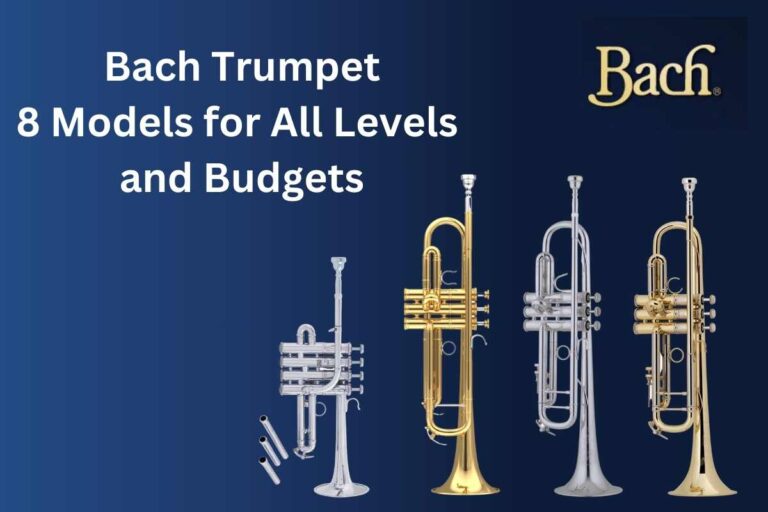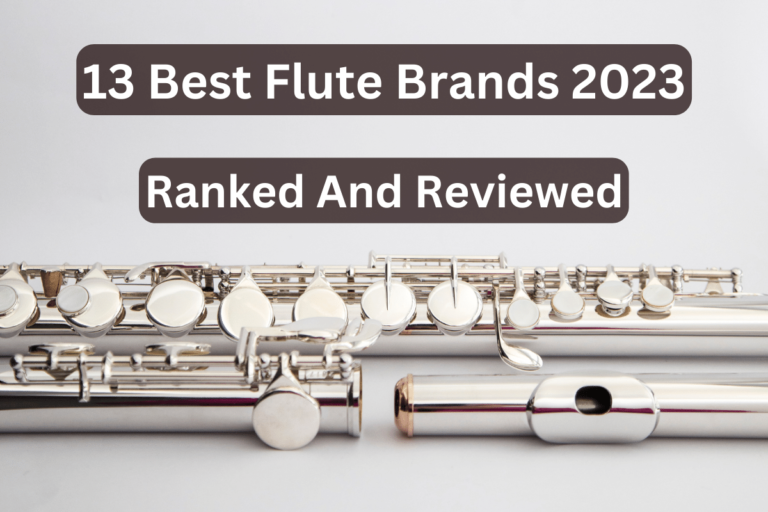Trombone Parts | The Best Complete Guide 2023
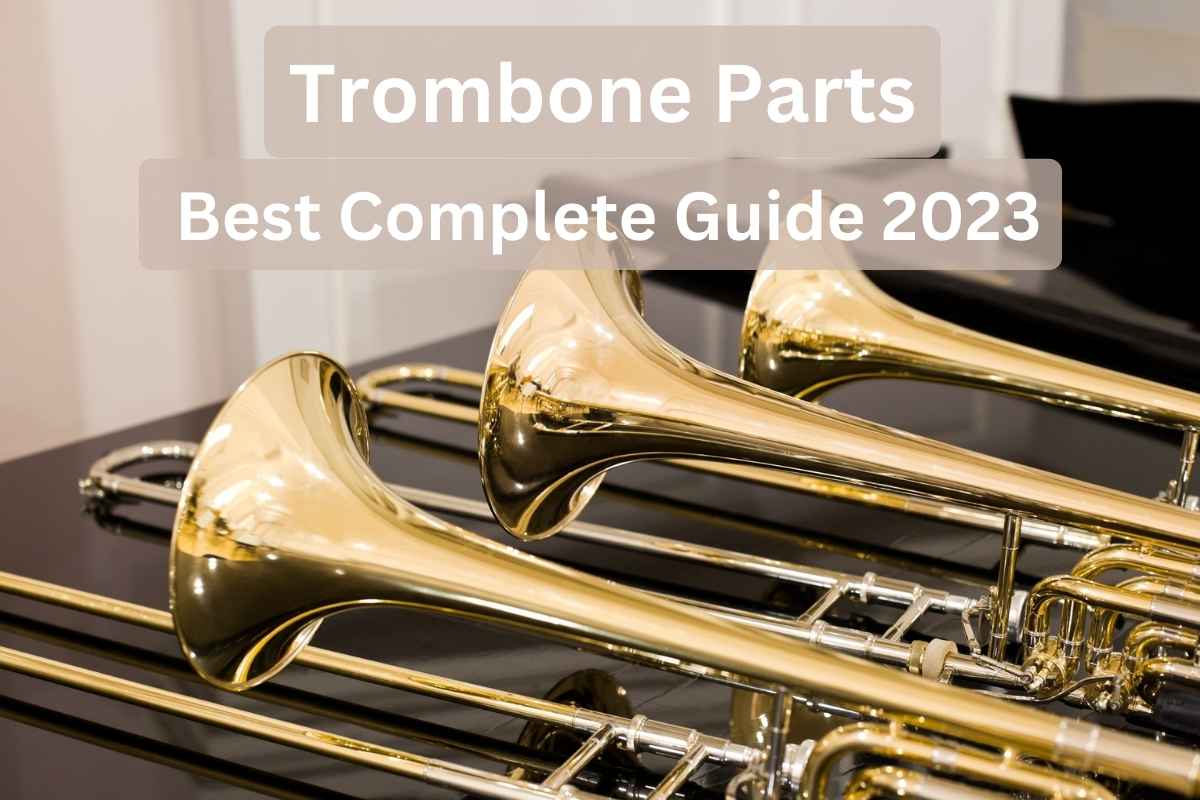
Are you in search of an up-to-date, comprehensive guide on trombone parts and how they interact? Here we provide just such an extensive resource. With our professional yet friendly guide, all that remains for you to purchase all necessary trombone pieces is making an informed decision! To read through it for yourself — access Eugene music blog’s comprehensive trombone guide compiled here!
Here you will find an outstanding guide from Yamaha on how to play trombone – one of the world’s premier manufacturers of this instrument.
Main Trombone Parts of the Trombone
The tenor trombone has long been one of the most modern brass instruments, used widely across orchestras, concert bands, jazz ensembles and solo performances alike. Composed of several main parts: bell section, slide, mouthpiece and tubing.
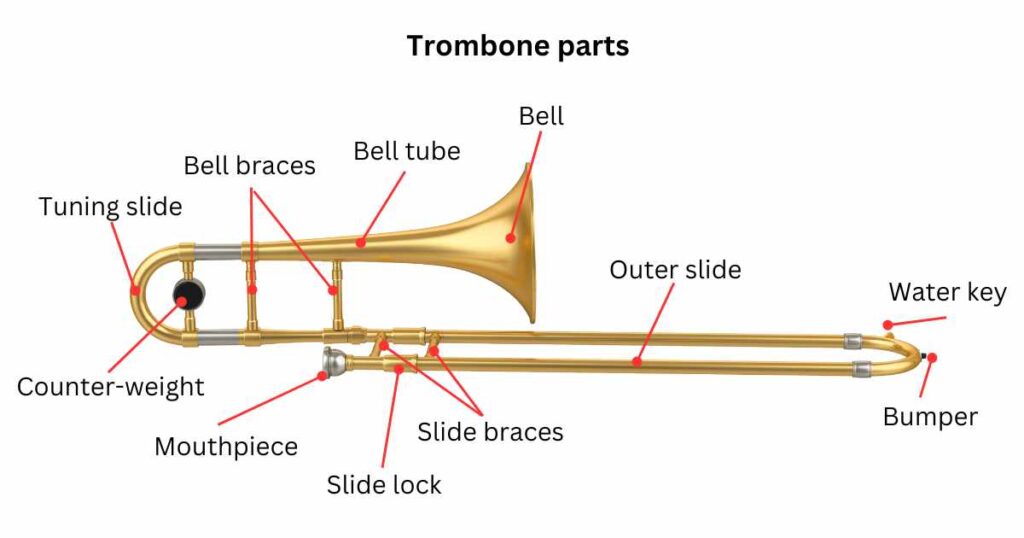
Its bell produces sound waves while the slide alters its pitch by lengthening or shortening the tubing; the mouthpiece uses sound generated through lips while tubing transports air in and out of its bell for music performance; these parts work in concert to produce the signature tone that represents professional musicians playing it! All parts combine into its unique sound that communicates clarity, confidence and professionalism when performing it!
Trombone Bell Section
The bell section is the large, flared end of a trombone that amplifies sound. It produces warm tones while its shape helps focus them onto one direction rather than dissipating them over time. Furthermore, size and design contribute to creating its distinct sound signature.
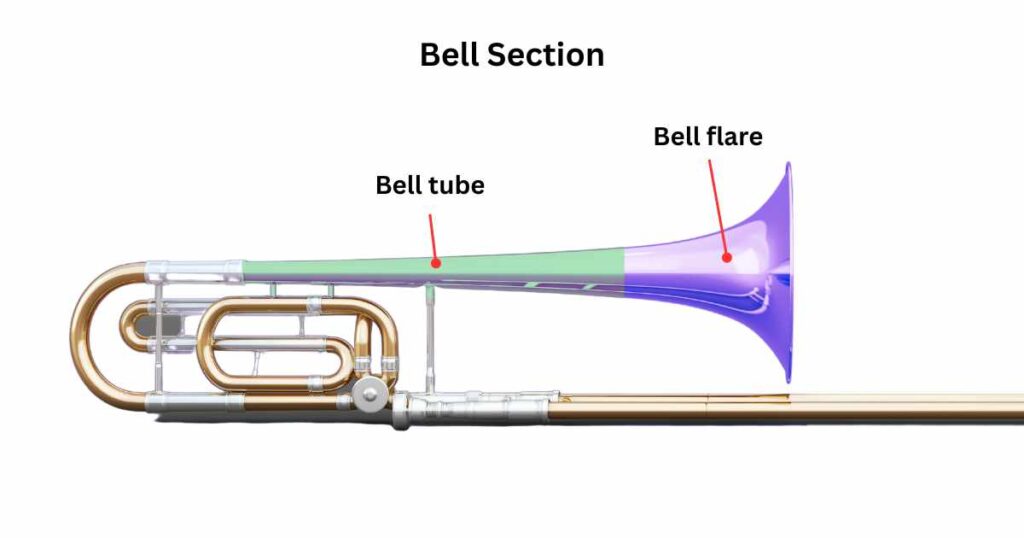
Like its sibling, the slide, bells also use braces. These connect it to its slide receiver and serve as a support structure for its tuning slide. Bell braces curl around into a U-shape for a direct connection with its mouthpiece. Bell braces protect its structure from collapsing under its weight.
The Bell Variations
Bells come in all sorts of sizes, ranging from small to large. Small bells are great for smaller spaces or jazz bands, while larger bells provide fuller sounds with greater resonance — perfect for orchestra.
The weight and material of bell sections also shape their tone and projection, with heavier bells producing deeper tones. Lighter ones offer crisper sounds instead. Bell sections are typically made of brass or stainless steel; specialty bells may include silver or platinum options.
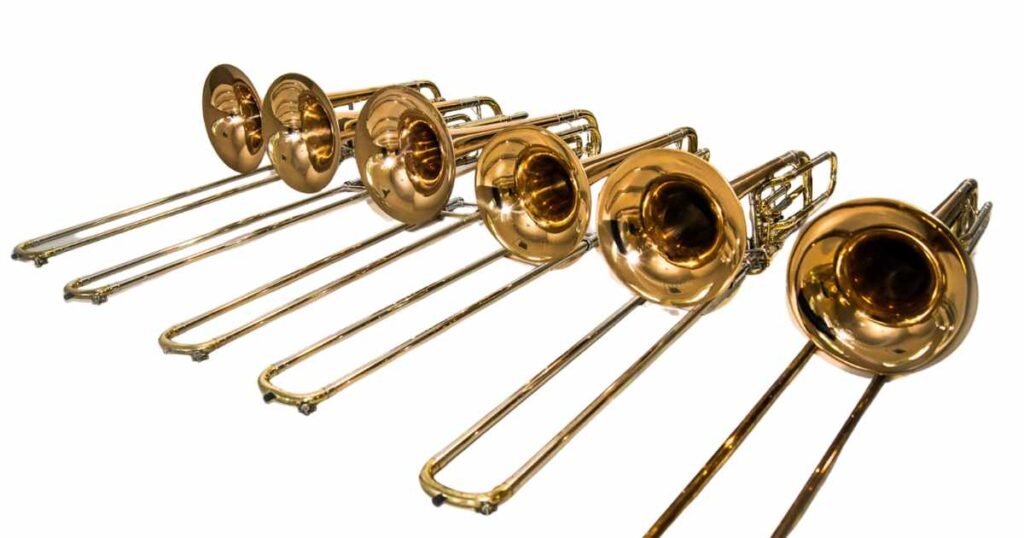
Some bell sections feature double-wrap designs. That helps focus the sound and increase projection, so experimenting with various bells to find one which meets both your playing style needs and aesthetic preferences is highly encouraged.
Bell Tube
The bell tube serves as the connection between the bell section and the slide. Its size and shape influence intonation and resistance – longer tubes create greater resonance. Shorter tubes offer easier access to high notes.
The bell tube channels air and vibration from the bell section into the tuning slide. A more traditional tenor trombone sound requires narrower bell tubes which produce bright, focused tones — wider tubes may produce mellow yet powerful tones with a wider frequency range.
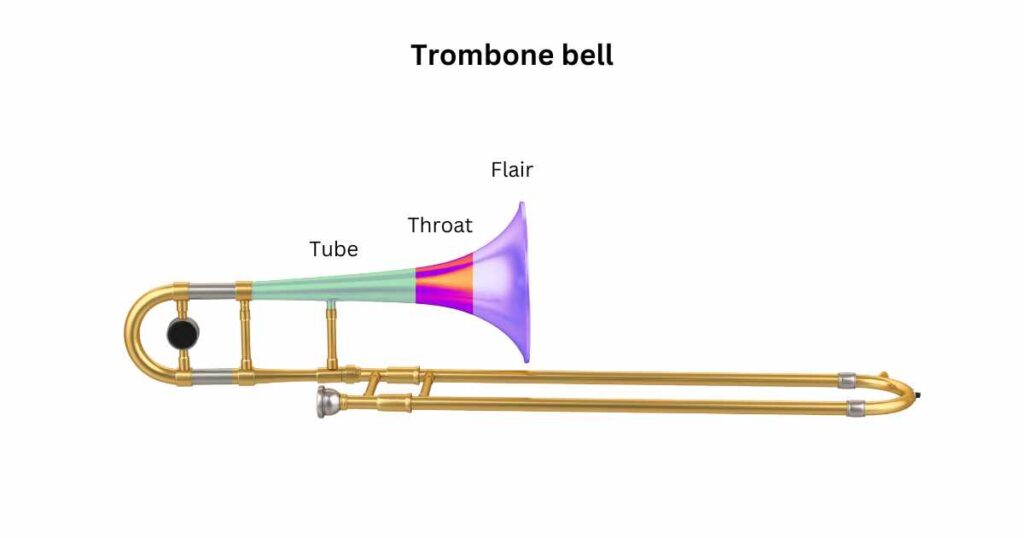
Bell Flare
The bell flare is the part of the bell where sound waves emanate. Its design plays an integral part in how quickly sounds dissipate over time. An ideal flare should have enough amplifying properties – remaining well balanced with other components for an authentic and well-rounded tone.
For a more focused tone, a smaller bell flare may be preferable; to increase volume and projection – a larger bell flare may be required; either way, all bell flares must have an evenly distributed curve to avoid sound distortion during playing.
The Slide
The trombone tuning slide provides for a transition between notes by way of its series of metal tubes that can be moved and adjusted by sliding them together. It changes pitch with each movement of the tubes. Each metal tube moves on its slide – its pitch shift accordingly.
Knowing when and which tube to slide in or out can help the performer reach the desired note, so mastery over manipulating and controlling your slide is an indispensable skill for any trombonist.
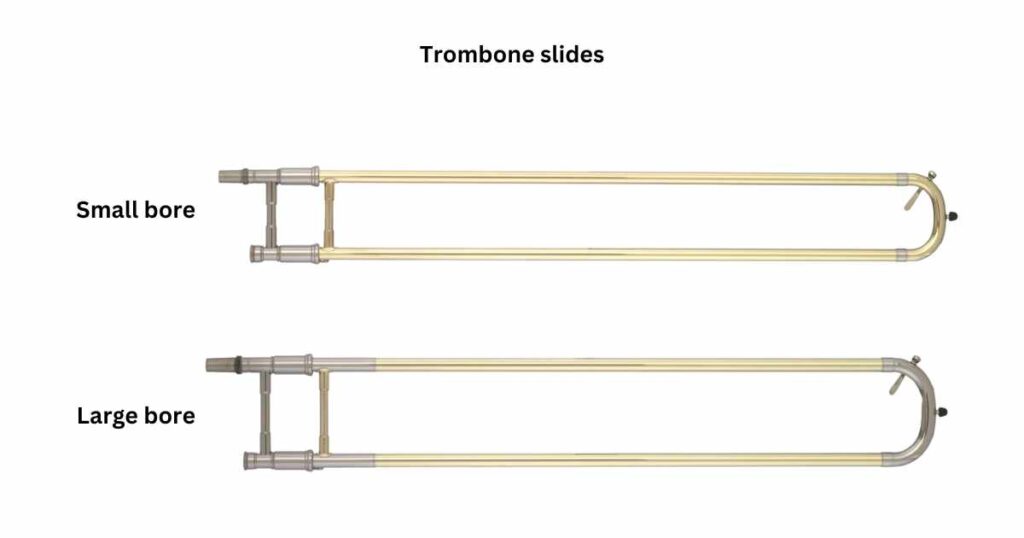
Proper care and maintenance of your trombone are also key to producing quality sounds. Be sure to keep all slides lubricated with oil to protect their operation; in addition, check for any dented tubing which might obstruct its sounds or any dents or bends which might reduce sound output.
Inner Slide
A slide consists of an inner slide and an outer slide connected in a telescopic manner by means of hinges, with the inner slide sitting inside of its counterpart for seamless operation and length adjustments. To facilitate seamless interaction between components of this piece, both are lubricated accordingly for smooth action.
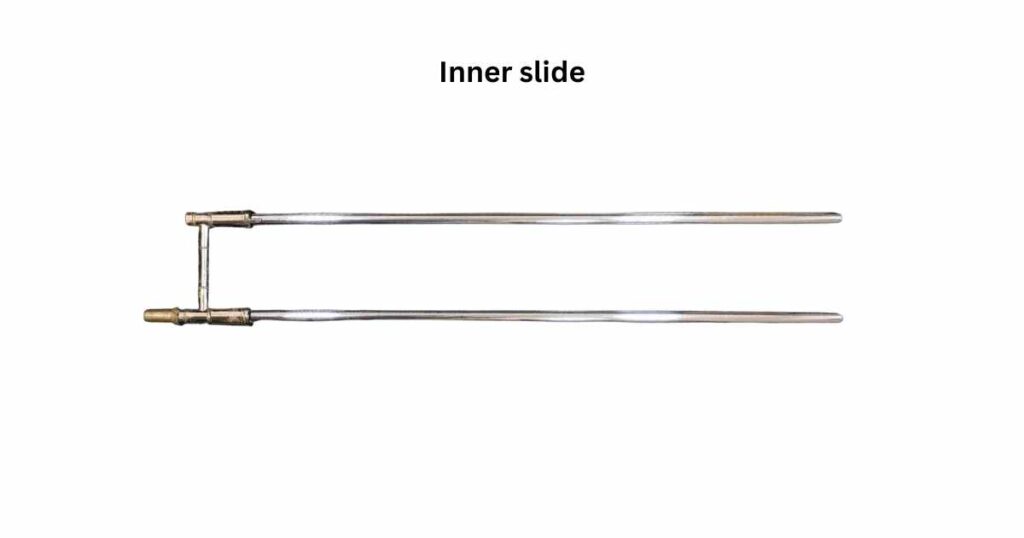
The inner slide houses the mechanism which connects to the tuning slide of an musical instrument by the telescopic assembly for seamless integration between these components.
Outer Slide
The outer slide features a slightly larger diameter than its counterpart to enable seamless variation by trombone players without increasing bulk in their instrument. Musicians use this piece to control the pitch for manipulating an instrument’s tones and melodies.
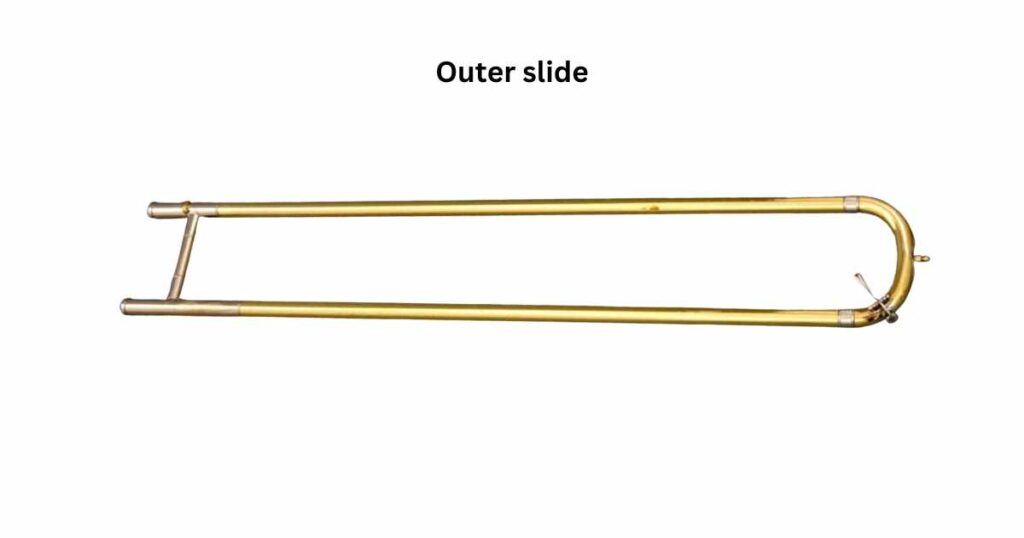
Slide Brace (Strut)
The slide brace (commonly referred to as a “strut”) connects a trombone’s inner and outer slides and plays an essential role in providing smooth extension/contraction action. Add stability, strength, and balance when playing by easily moving slides while maintaining an ergonomic posture. For added comfort — the best slide braces feature sturdy metal with gripping materials for enhanced playing comfort.
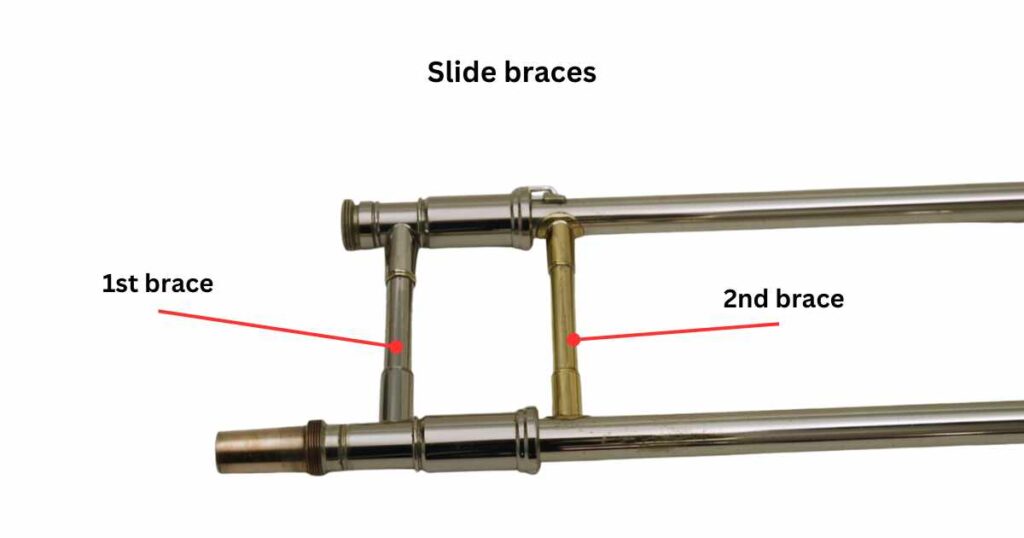
Braces positioned at an acute angle to the slides serve multiple functions; those closest to the player provide stability – those farthest away act as a grip for sliding movement.
Trombonists use their left hand to hold onto the 1st slide brace, which keeps the inner slide steady; and their right arm controls both outer slides by gripping onto 2nd slide braces firmly with both hands – this allows for precise control and fluid movements required of playing trombone with finesse and artistry.
Slide Lock
Failing to control a trombone’s sliding movements can have serious repercussions for its instrument. When the slide accidentally detaches – it can bend and render it useless – making use of its slide lock mechanism important! Be wary when mistakingly sliding across. Make use of the locking system! Safety first!
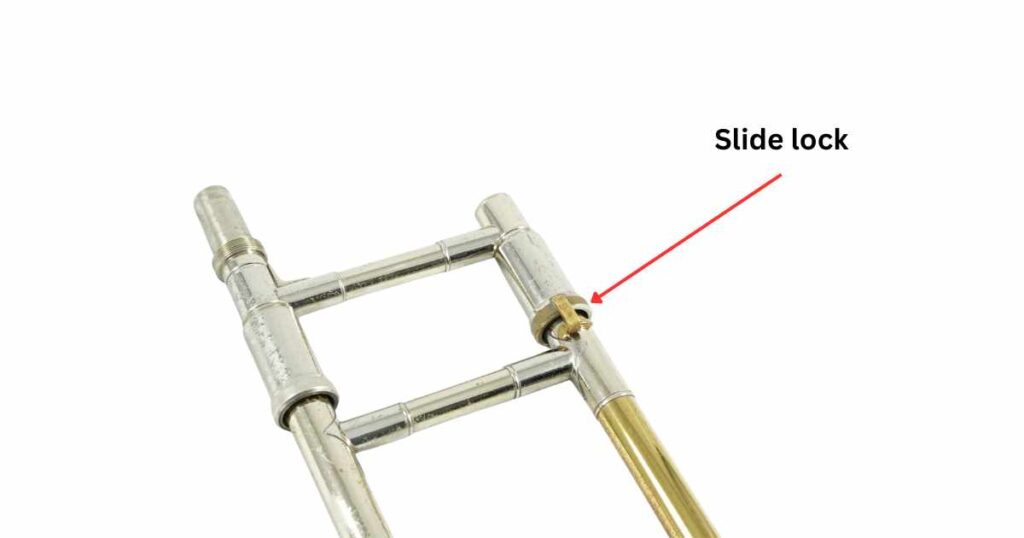
The slide lock is a small latch designed to stop the outer slide from moving and prevent dropping, protecting the instrument and user from costly accidents. Always lock it when not using; it could save trombones lives! It is an important habit that could save both time and money in accidents.
Water Key (Spit Valve)
The Water key, also known as a spit valve, can be found at the base of each slide and helps release moisture from inside of an instrument. Most trombones include simple water keys, which work by pressing down on a lever that opens a small hole allowing airflow through it.
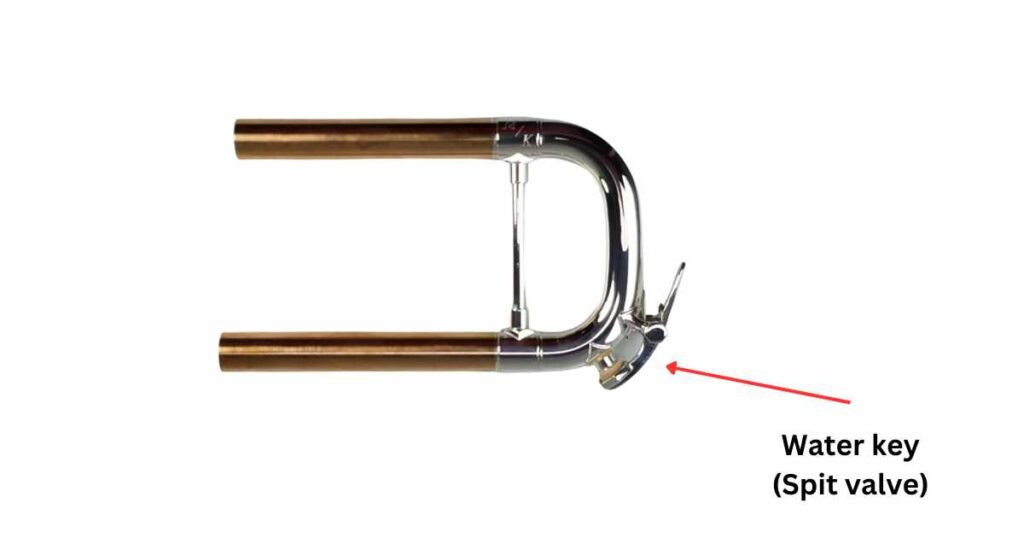
Some high-end trombones feature double-key system water keys. Those offer more secure means of discharging moisture from their valve. Pushing one of them will open it, releasing air — pressing another will release it when done using.
Bumper (Ferrule, Stopper)
A bumper does not change the sound but does provide protection for trombones. A bumper is a small rubber piece located at the end of each trombone slide and serves as an important safety feature to safeguard the instrument for a smooth playing experience.
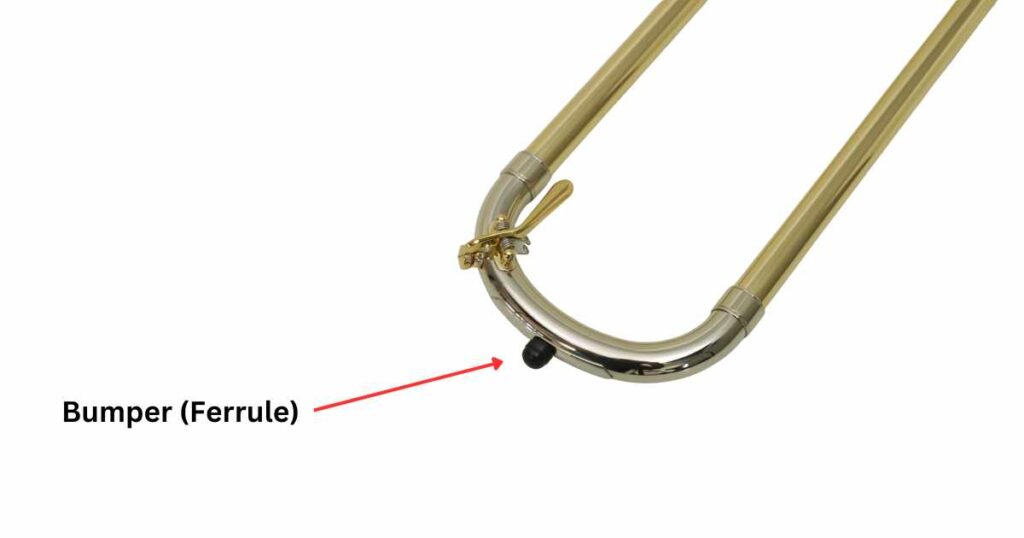
Positioning instruments vertically on the floor ensures safety and protection — there will be no hard collisions between the slide and the ground!
A bumper can help minimize the impact of accidental contact with objects; however, being alert and using common sense are the best defenses in protecting your instrument from possible accidents.
Mouthpiece Receiver
The mouthpiece receiver of an instrument is where its mouthpiece attaches; you’ll typically find this at the end of its slide closest to its player. Sound waves from the mouthpiece are then released through it into this part.
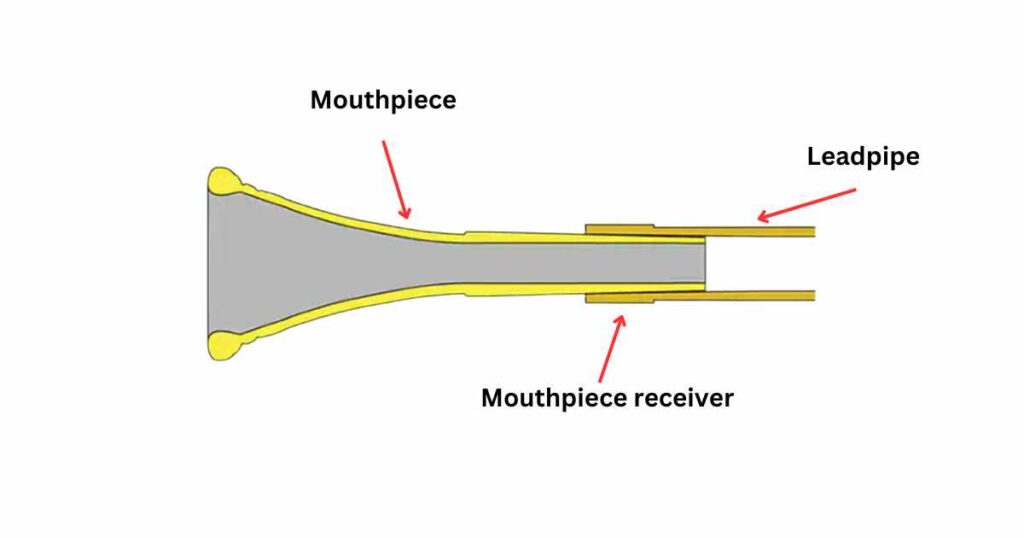
The mouthpiece receiver of a trombone is a metal cylinder attached to its leadpipe. Press your mouthpiece into it before playing and give a slight twist before giving a firm press for optimal fitment — remember to clean and store after every use!
Avoid applying excessive pressure when inserting the mouthpiece to avoid damaging the receiver. Never strike or tighten with your hand as that could damage or jam up the device and become stuck — consult a teacher or professional repair service if this should ever occur.
Mouthpiece
The mouthpiece acts like a funnel through which to expel air. It rests inside the tube’s opening without being attached to its slide; and allows air and lip vibrations to travel throughout its body and amplify sound within.
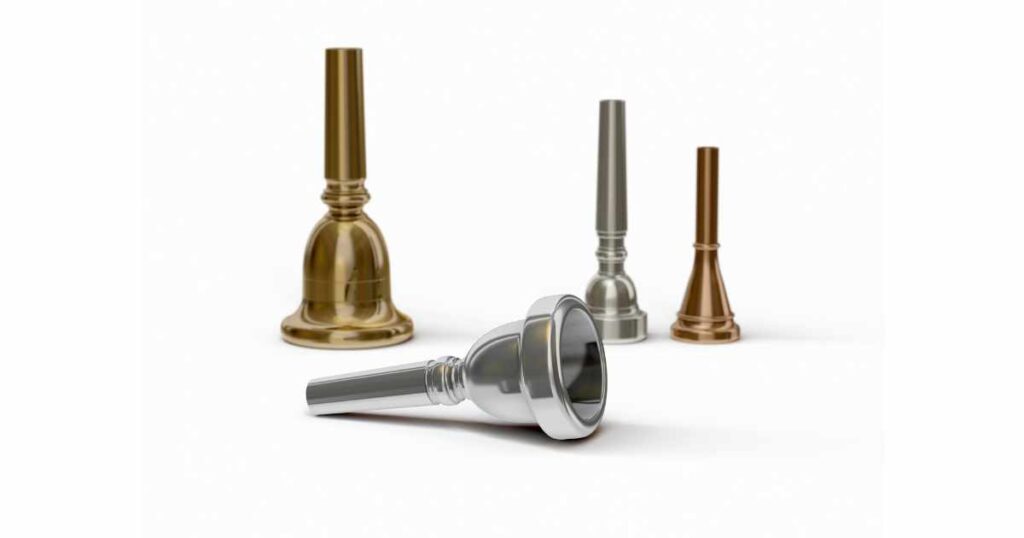
With its large and deep design, a trombone mouthpiece makes it easier for beginners to achieve rich tones quickly.
Your playing style dictates which mouthpiece size best meets it — choose smaller for bright sound in the higher register or larger to produce dark and mellow tones in a lower register.
Rim
A mouthpiece’s rim is its circular edge which contacts lips.
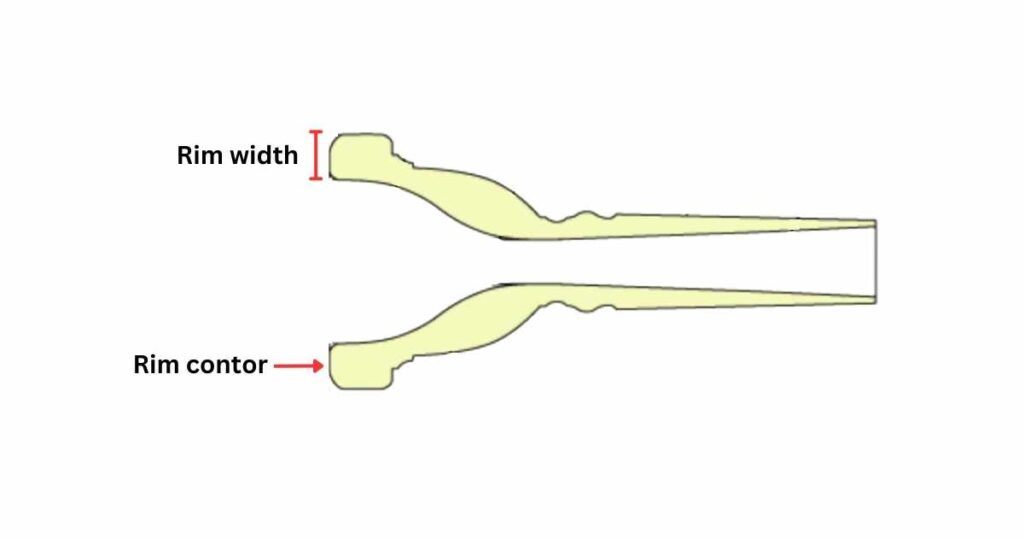
When selecting a mouthpiece, its inner rim diameter plays an integral part. A smaller inner rim diameter allows for easier high notes but restricts volume output — a larger inner rim diameter provides ample volume production as well as lower tone production more easily but may reduce endurance levels.
Wide rims offer comfort and support while restricting flexibility. Narrower rims promote increased agility but may reduce comfort levels during attacks or endurance runs. Flatter rims improve endurance while restricting flexibility; rounder ones offer a secure feel but could limit endurance levels.
Thicker rims offer more lip contact for easier high notes; thinner ones offer greater control and flexibility. Rim bite – or the sharpness of its inside corner – has a direct bearing on pitch accuracy and tone richness. The sharpness aids stability but restricts lip control — soft bites compromise attack and pitch clarity.
Cup
The cup sits just beneath the rim. Determined its size by measuring the inside edge between the rim and the other side of the cup.
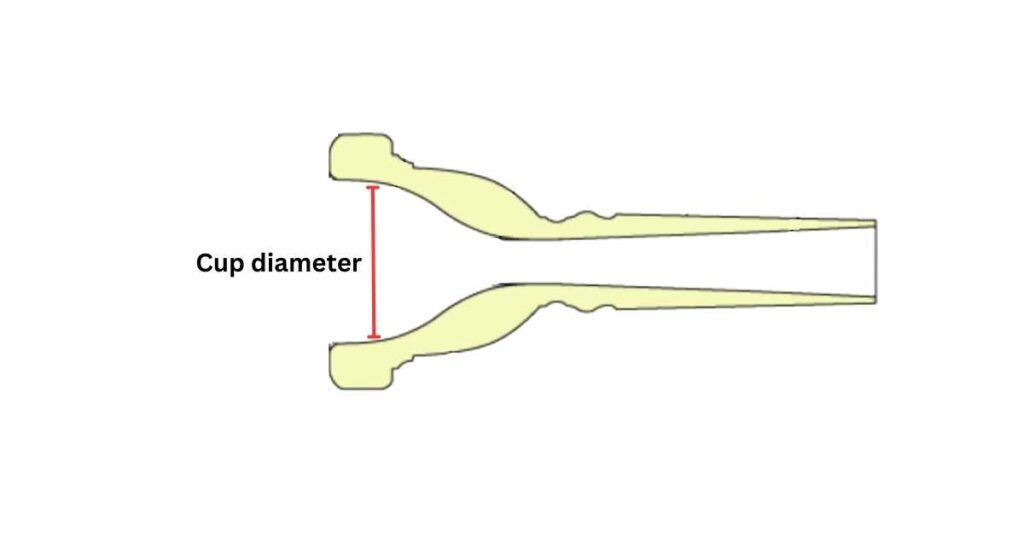
A mouthpiece’s cup shape greatly affects its sound; these cups take the form of either an “U” or a “V”. A “U”-shaped cup produces brighter notes for high register playing; on the other hand, V-shaped cups create darker tones which make lower register playing simpler.
If a cup diameter is too large for its user, it can negatively impact endurance, articulations, sound production, intonation and range; too small may strain sound quality while decreasing range or hindering attacks or increasing blow resistance. Matching up perfectly to an individual player’s size can enhance flexibilities – attacks blow resistance endurance range.
Throat
The mouthpiece throat connects the cup to the shank and plays an integral part in air resistance. A larger bore will produce a bigger sound but less endurance. All because an increased airflow wears down lips faster.
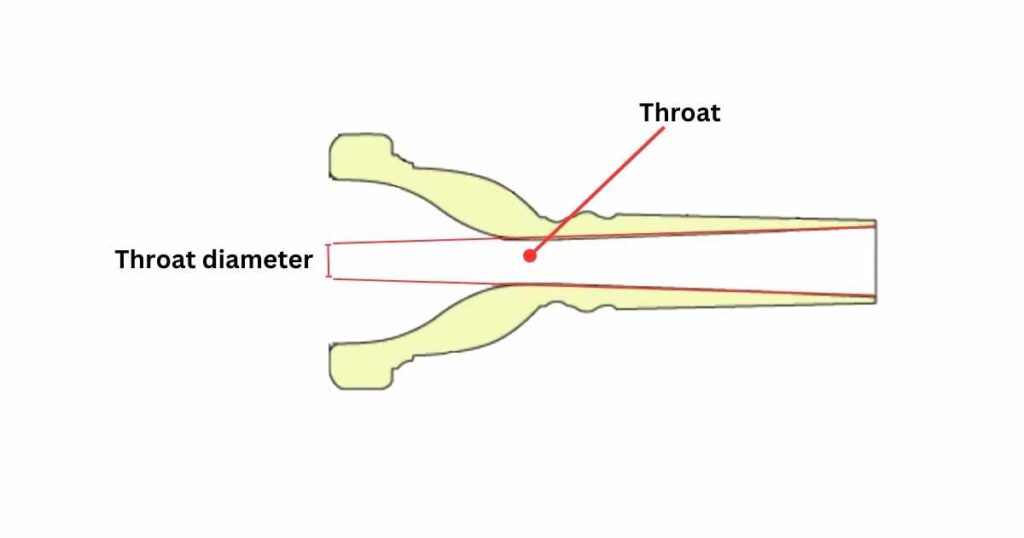
Air is compressed and guided through this small hole into your instrument. It channels any energy from vibrating lips before moving into one concentrated blast of sound.
The throat at the base of a cup elegantly channels liquid. This ensures maximum performance and control is possible.
Backbore (Bore)
The mouthpiece backbore, situated nearby a player’s lips, serves to regulate airflow — sealing lips to the instrument and providing support when playing.
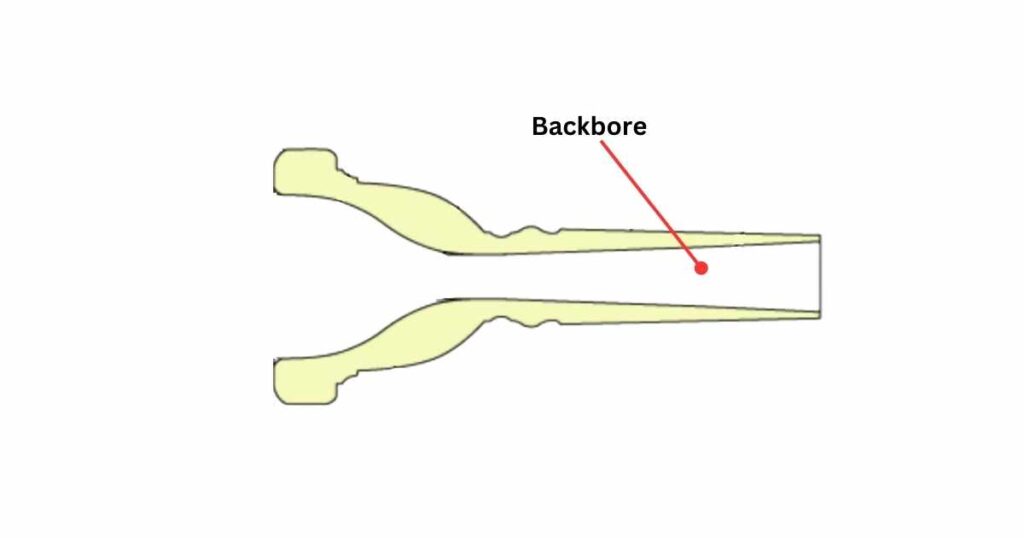
Backbores are widening out to produce sound while shaping tone and resistance levels. Narrower backbores enhance high notes while increasing resistance levels – more open backbores enhance lower notes with deeper tones and resistance levels.
Tubing
When placed end to end, tenor trombone brass tubing measures roughly 9 feet long; playing in its 7th position — the instrument stretches 13-14 feet long.
Trombone tubing can be composed of various metals, each offering its own distinct sound and qualities. Nickel-silver offers a bright tone; yellow brass has warmer qualities. Sometimes players combine various metal types together for maximum effect.
Tubing comes in various weights; typically, heavier tubing offers greater resonance and sustain for your tone. Beginners might benefit more from starting with lighter models.
Never place or balance the trombone directly on the floor or leave its horn perched precariously atop a table – its shape determines both tonality and volume of sound produced. Even minute changes to metal surfaces may alter their sound output significantly! When not playing — store the trombone safely within its case!
Bore
A trombone’s bore refers to its internal tubing diameter. This determines how much air travels through and impacts the sound production of this instrument; trombones typically feature bore sizes from 0.480 inches up to 0.564 inches for optimal sound production.
Small-bore tenor trombones (.480” to.508”) offer smaller, brighter and more focused sound – ideal for jazz, pop, rock and commercial music genres. Student trombones also come equipped with smaller bore sizes for easier playability and responsiveness from young players.
Medium-bore tenor trombones (.508″-.525′”) offer great sound without feeling open (not needing too much air) – an ideal compromise between the small bore and the large bore instruments.
Large-bore tenor trombones (.525″-.560”) offer the darkest sounds for classical trombonists and boast wider response and stability to excel with wide dynamics and ranges, ideal for wind ensembles, orchestras, brass instruments quintets or solo performances. Most also come equipped with F-Attachments making these instruments versatile in various situations – upgrade from student instruments today and discover your true potential!
Tuning Slide
A tuning slide can be found positioned near an instrument’s heel or rearmost section and formed as an inward U shape. This adjustable component helps fine-tune its sound output precisely by being moved back and forth under minimal pressure – lubricate regularly for best results to extend its usefulness!
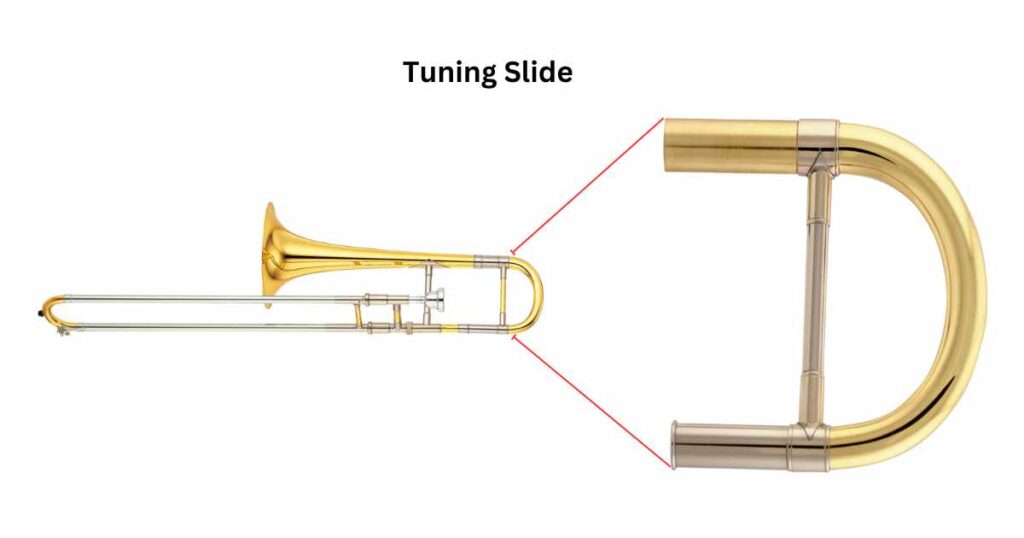
Tuning slides help adjust the pitch by manipulating the tubing length. Extending it, the tubing lengthens for lower sounds; pushing back shortens the tubing resulting in increased pitch.
Counterweight
The counterweight is a small device attached to the back brace of trombones that helps balance its weight for more comfortable handling and playing. It fastens onto the trombone back brace via screws.
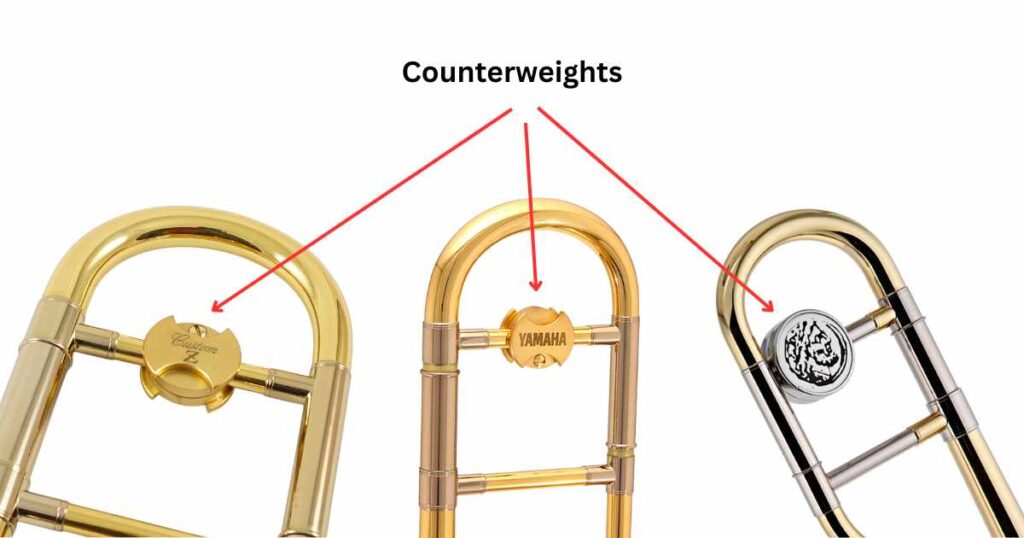
Players often express differing viewpoints regarding counterweight use; some recognize its benefits – others consider it unnecessary. Its usefulness depends on factors like age, make and type of trombone being played; this piece adds mass to an instrument, darkening the sound.
If a trombone comes equipped with an F attachment, extra weight usually isn’t needed. The manufacturer’s logo can often be found engraved within its bell flare.
F Attachment
F-attachments feature a rotary valve that directs airflow through an additional length of tubing coiled up in either C or B flat sections — this tubing allows a trombonist to transpose down one perfect fourth into an F key for additional notes in a lower register.
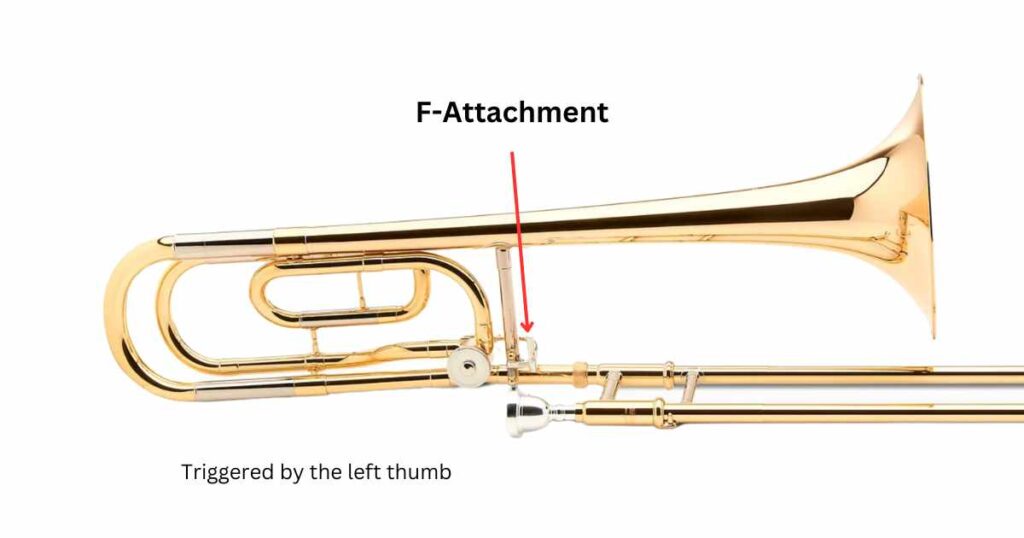
F-attachments, also referred to as plugs or valves, connect directly with a rotary valve via string or metal lever and are commonly located on your left-hand side for pressing with thumb pressure.
These attachments typically fall under two categories: open wrap and closed wrap.
Open Wrap F Attachment
The Open Wrap F attachment offers minimal corners for maximum lengthening while attenuating bends, resulting in less resistance for an open sound with greater resonance.
An open wrap gives a more open tone with less resistance — less force needed for you to produce sound — making playing easier by decreasing the force needed to produce sounds.
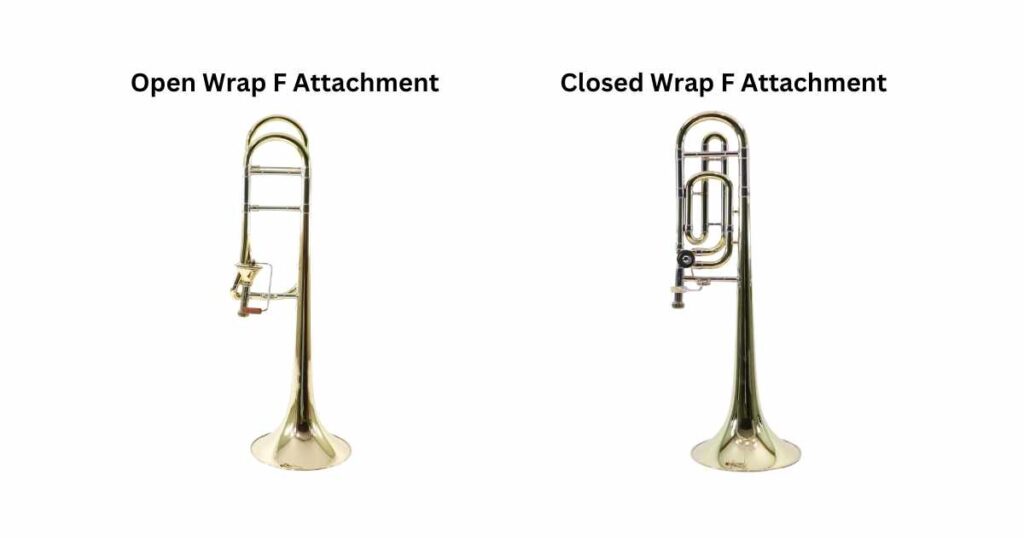
Closed Wrap F Attachment
The closed wrap F attachment sits within the bell section and features more corners, creating greater resistance when struck compared with the open wrap attachment. Each blow requires a greater force in order to produce sound; its opposite can be found with open wrap attachment requiring greater forces before sound can be heard produced by each blow of an instrument.
Closed wrap trombone playing is the go-to style, often preferred by soloists and smaller ensembles. With proper practice, closed wrap players can achieve dynamic control, pitch precision and tonal color in their performances – an invaluable way to demonstrate control.
Bass Trombones Parts Difference
General characteristics of basses include larger bells, bigger bore sizes and wider mouthpieces than their counterparts in order to produce deeper bass notes that sound darker when playing low notes while becoming increasingly muffled as the notes rise higher up the scale. Bass trombone additionally typically boasts larger bell flares.
Starting from their respective tubing lengths, both instruments (bass and tenor) measure 9 feet or approximately 2.7 meters when fully extended – pretty impressive!
Bass trombones come with various configurations that determine what keys they can play in. A difference among bass trombones can be seen between their valves and triggers; bass trombones feature extra tubing equipped with its own valves and triggers, making this instrument especially dynamic to listen to!
There are two primary configurations of single and double rotor configurations. Those are known as independent and dependent configurations. Therefore, their key variations include: Bb (open valves), F (first valve engaged) and Eb (both valves engaged).
Conclusion
Keep in mind that no two trombones are created equal. With many choices out there — it can be hard to choose the ideal parts; that’s why we compiled this comprehensive guide on tenor trombone parts available in 2023 as a resource to make finding suitable parts easier! Hopefully, you found our guide useful; we hope so too, wishing you every success with finding parts suitable to your instrument!
Enjoy playing! Wish you lots of success. Read this post about a Trombone Slide Chart to gain basic knowledge — take your first steps now.

